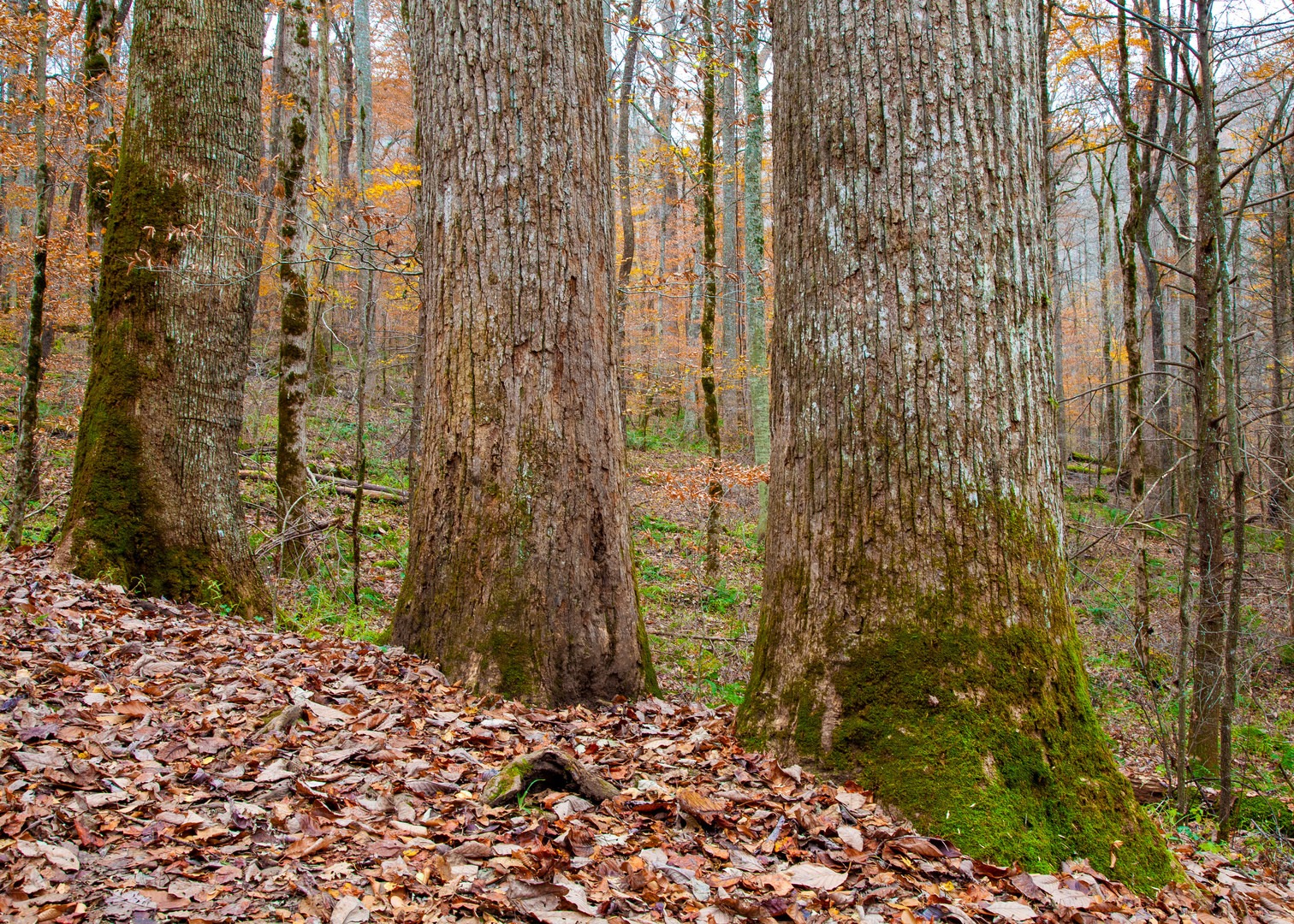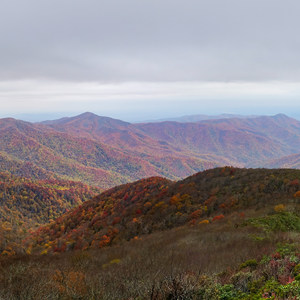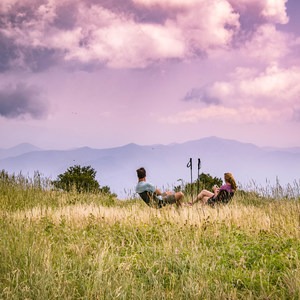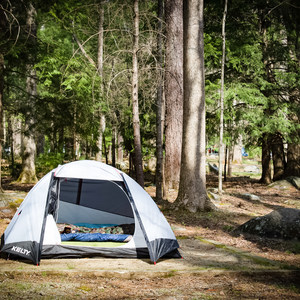At 3,800 acres, Joyce Kilmer Memorial Forest one of the east coast’s largest continuous old-growth forests. Part of the Joyce Kilmer Slickrock Wilderness, it provides the backdrop for a stunning walk through the woods. Growing here are trees 400 years old and poplars more than 20 feet around. This tract of old growth is categorized as an “old-growth cove hardwood forest,” which is a dominant mix of oak, poplar, beech, and sycamore. These old-growth cove forests are unique to the mid-Appalachian Mountain coves. Few still exist.
The trail is an easy 2-mile figure eight that consists of a set of connected loops, the upper and the lower loop. It is an easy trail, but since it is located on a steep cove the trail involves step-climbing from the parking area through the lower loop to the upper loop. The upper loop is the prettier of the two loops. Most of the giant trees grow here. It is not as steep as the lower loop. The best time to visit is just after a long slow rain in spring. The trees’ bark takes a darker tone, increasing its texture and contrast with the forest background. Fall foliage is also stunning. Peak season is usually mid-October to early November.
Joyce Kilmer Memorial Forest also has giant hemlocks. Unfortunately, the forest is badly infected with the hemlock woolly adelgid (HWA), an invasive pest introduced from East Asia. Most of the giant hemlocks died, creating a safety issue from falling trees and branches. To keep the trail open, the Forest Service used small explosives to down dead trees in a manner that mimics the wind. This created a much lighter and drier forest with a different look and feel from the upper loop.
HWA is wiping out native hemlocks in the southern Appalachian at an alarming rate, and there is no good solution to fight this pest. The larger hemlocks in Joyce Kilmer are already dead, and only a small percentage of treated smaller trees are alive. It is not the first blight to affect this forest. The chestnut blight wiped out all the chestnuts in the grove by the mid-1930s. As a result, Joyce Kilmer is not the old growth of yesteryear, but there are still many giants that provide that old-growth feel compared to the surrounding second growth.
Joyce Kilmer Memorial Forest got its name from the early 20th century poet, Joyce Kilmer, who wrote the popular poem, “Trees." When World War I started, he enlisted, insisted on serving in the front lines, and was killed on July 30, 1918. A New York chapter of The Veterans of Foreign Wars petitioned the Forest Service for a memorial forest in honor of the poet-solder. After an extensive search, this tract was dedicated to the memory of Joyce Kilmer on the 18th anniversary of his death. In 1975, the Joyce Kilmer Memorial Forest was combined with the adjacent Slickrock area to become the Joyce Kilmer-Slickrock Wilderness.
The Joyce Kilmer Memorial Forest Trail is located in the southwestern corner of Nantahala National Forest of North Carolina near the mountainous border with Tennessee. This is a rugged and stunningly beautiful corner of North Carolina. It is popular hike with about 30,000 visitors a year. The trailhead is located at the end of the short Joyce Kilmer Road off of Santeetlah Road. Joyce Kilmer Slickrock Wilderness Loop is a longer and harder hike that will get you away from the crowds into extensive old growth with stunning views from the top of Stratton Bald. Camping is available at the nearby Horse Cove Campground. Many additional hiking opportunities exist in the wilderness and surrounding forest.




























Comments
Sign In and share them.